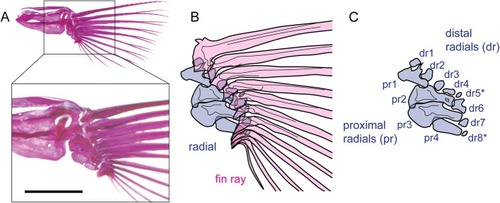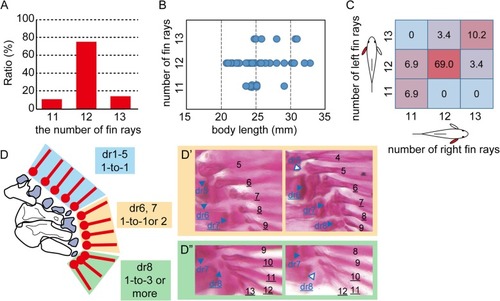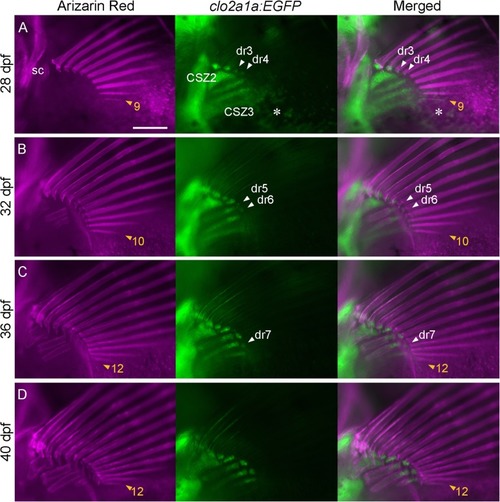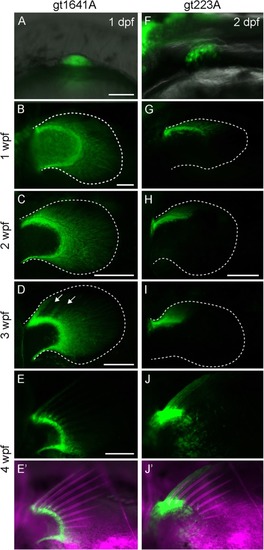- Title
-
Pattern of fin rays along the antero-posterior axis based on their connection to distal radials
- Authors
- Hamada, H., Uemoto, T., Tanaka, Y., Honda, Y., Kitajima, K., Umeda, T., Kawakami, A., Shinya, M., Kawakami, K., Tamura, K., Abe, G.
- Source
- Full text @ Zoological Lett
|
Skeletal anatomy of the zebrafish pectoral fin. |
|
Observation of skeletal anatomy of the pectoral fin in the RW strain |
|
Process of morphogenesis of the fin rays and radials. Calcified bones (Alizarin Red) and chondrogenic cells ( |
|
Expression pattern of EGFP in the pectoral fin of |




